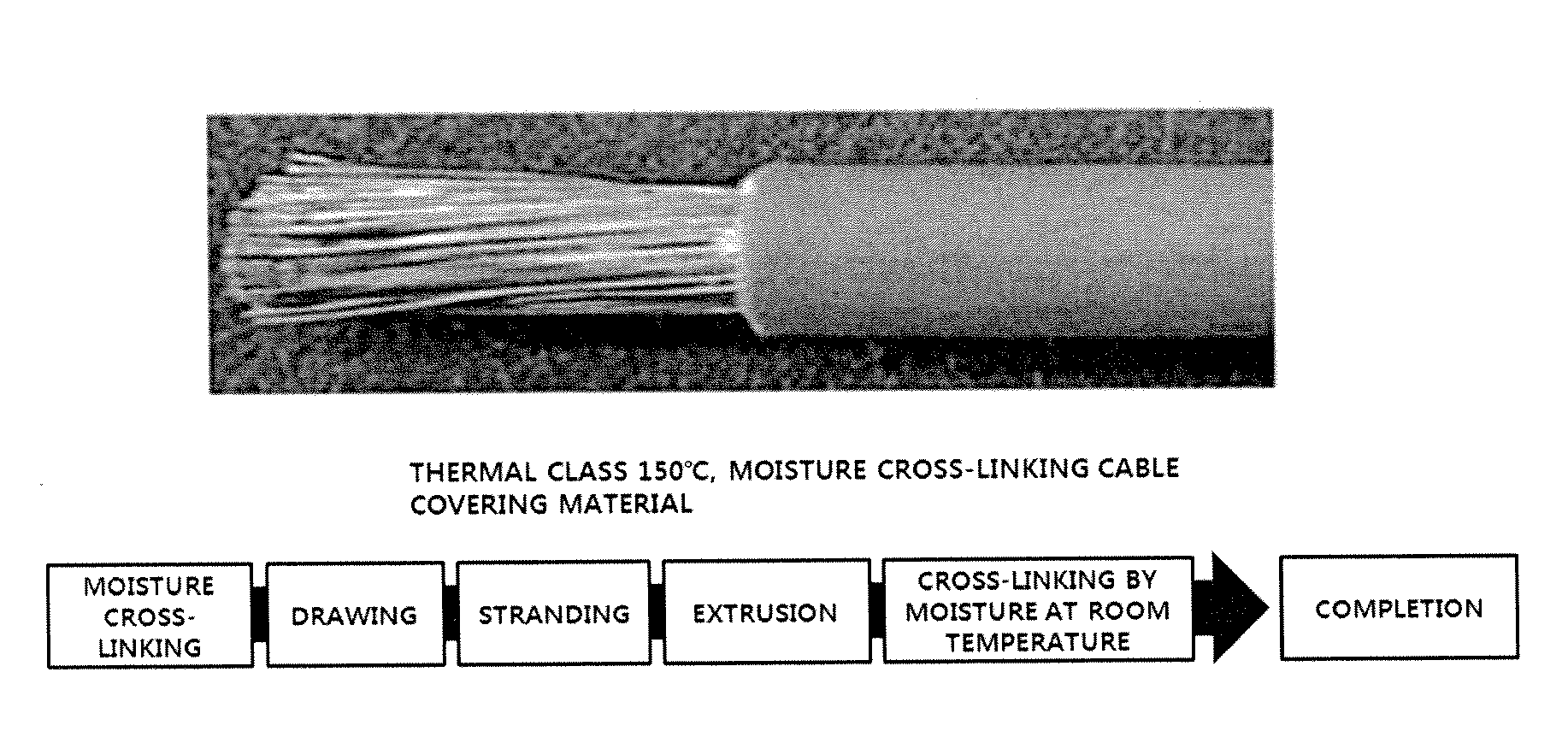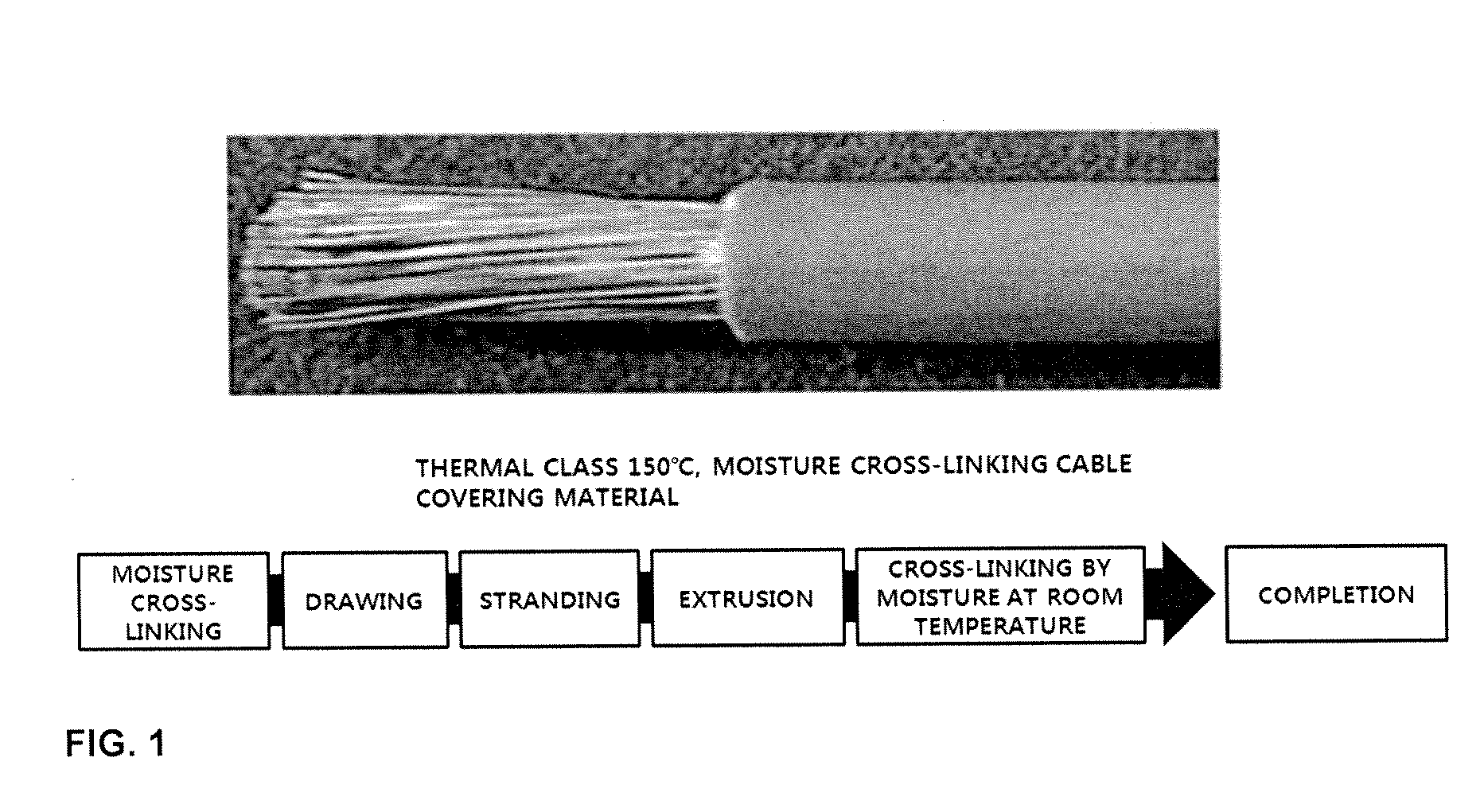Resin composition for producing insulating material and method for producing insulating material
a technology of insulating material and composition, which is applied in the direction of insulating conductors, plastic/resin/waxes insulators, cables, etc., can solve the problems of reduced mechanical and physical properties, high price of insulating materials used in class d, and inability to mold such as extrusion simple, etc., to achieve excellent extrusion molding properties, high flame retardancy, and high thermal resistan
- Summary
- Abstract
- Description
- Claims
- Application Information
AI Technical Summary
Benefits of technology
Problems solved by technology
Method used
Image
Examples
example 1
[0051]Referring to the following Table 1, a mixture was prepared by mixing, specifically, 28.2 g of an ethylene alpha-olefin copolymer (DF-810, Mitsui Chemicals, Inc., Japan) and 18.8 g of polyethylene (LDPE 2030, LG Chem, Ltd., Korea) as a base resin, 44.7 g of a magnesium hydroxide flame retardant of which surface is treated with vinyl silane (KISUMA 5P, Kyoywa Chemical Industry Co. Ltd., Japan), 0.6 g of a first antioxidant (ANOX-20, Chemtura, US) which is a phenol-based compound, 0.9 g of a second antioxidant (SEENOX 412S, ADEKA, Japan) which is a thio-based compound, 1 g of silicone oil (200 FLUID, DOW CORNING, US) as a lubricant, 2.6 g of vinyltrimethoxysilane (A-171, Evonik, US), 0.1 g of dicumyl peroxide (DCP, NOF Co., Japan), 3 g of a catalyst, and 0.1 g of a ultraviolet (UV) stabilizer.
[0052]Subsequently, the mixture was graft reacted by being kneaded for 20 minutes at a temperature of 190° C. in a 3 L / batch kneading apparatus [DISPERSION KNEADER, Fine Machinery Ind. Co., ...
PUM
| Property | Measurement | Unit |
|---|---|---|
| temperature | aaaaa | aaaaa |
| temperature | aaaaa | aaaaa |
| temperature | aaaaa | aaaaa |
Abstract
Description
Claims
Application Information
 Login to View More
Login to View More - R&D
- Intellectual Property
- Life Sciences
- Materials
- Tech Scout
- Unparalleled Data Quality
- Higher Quality Content
- 60% Fewer Hallucinations
Browse by: Latest US Patents, China's latest patents, Technical Efficacy Thesaurus, Application Domain, Technology Topic, Popular Technical Reports.
© 2025 PatSnap. All rights reserved.Legal|Privacy policy|Modern Slavery Act Transparency Statement|Sitemap|About US| Contact US: help@patsnap.com


